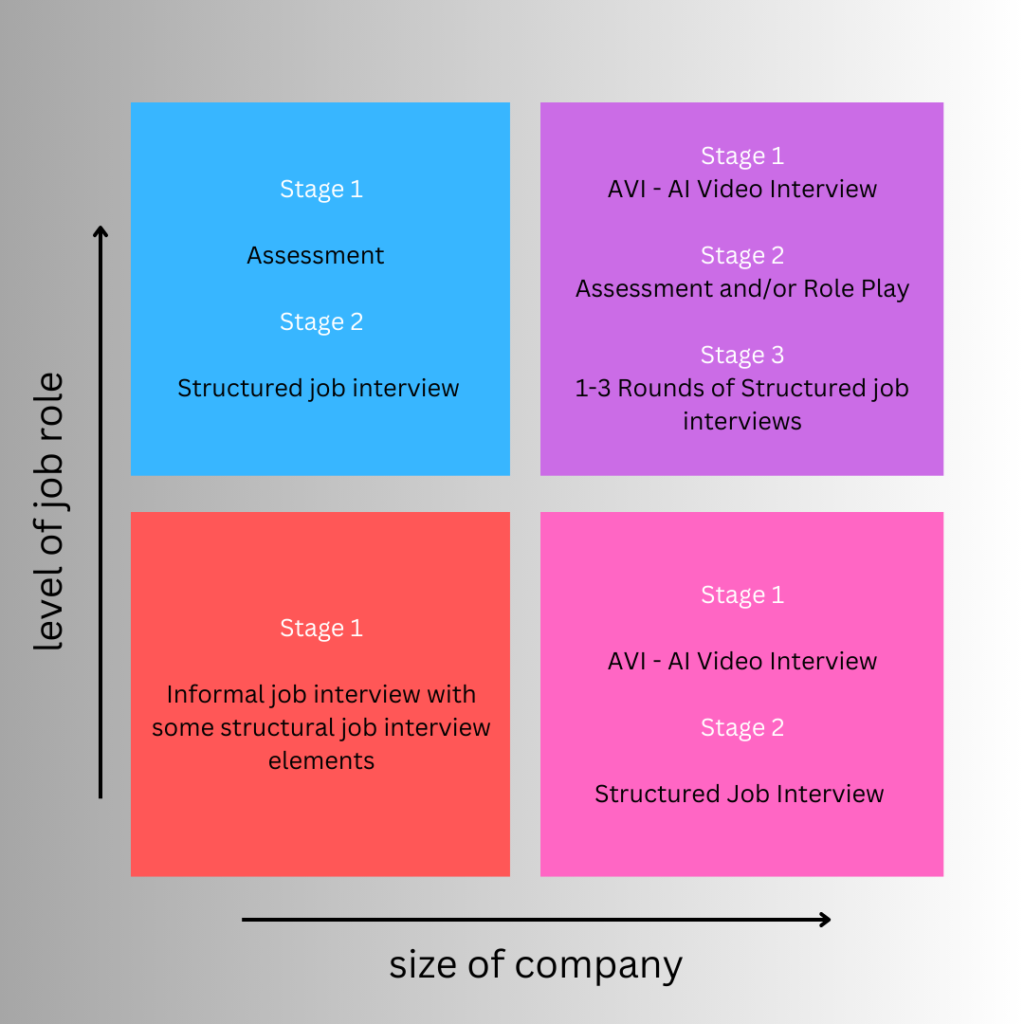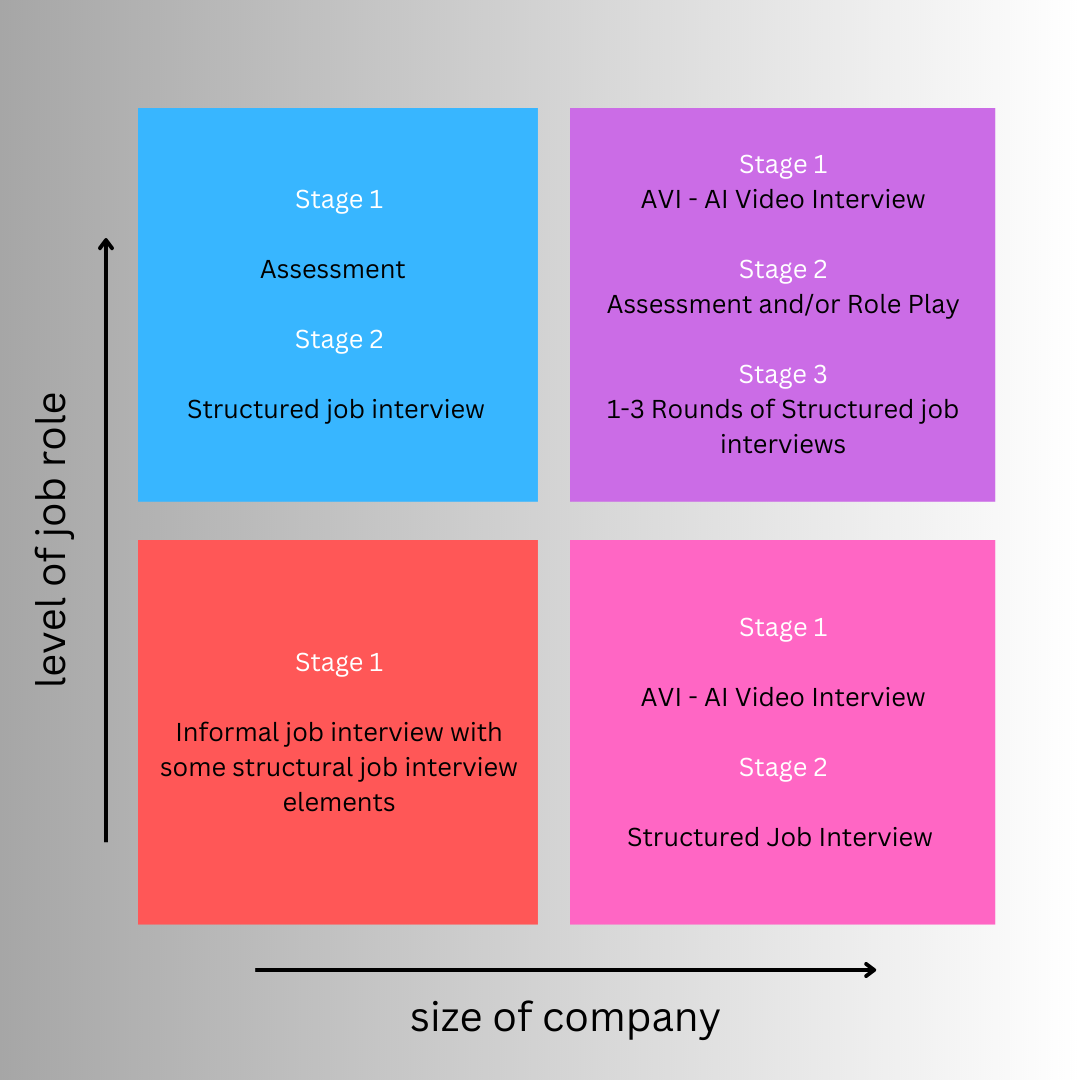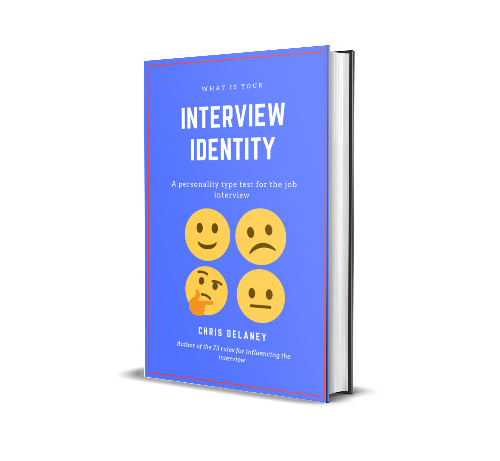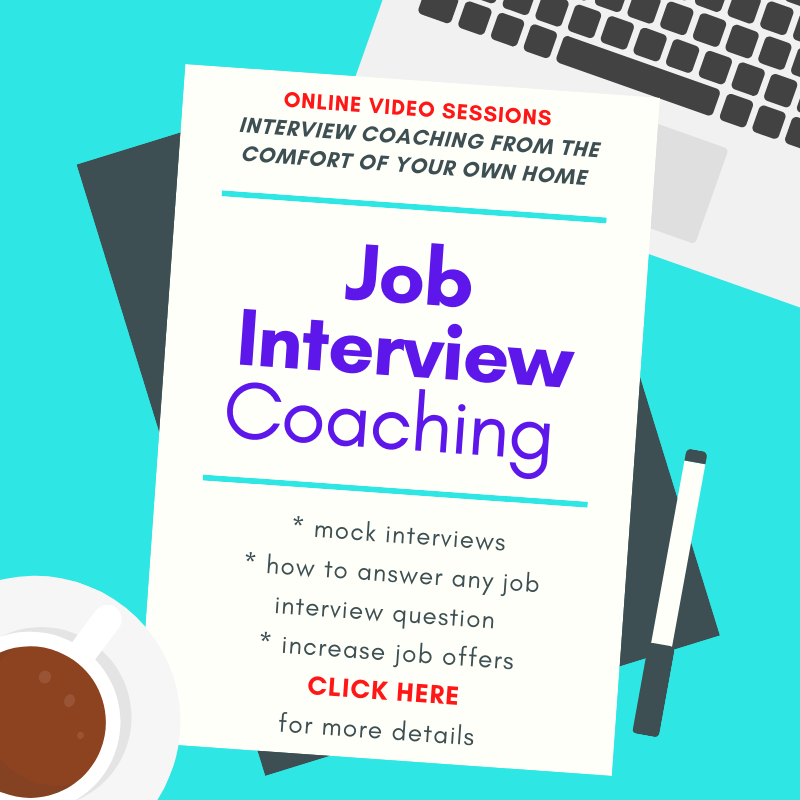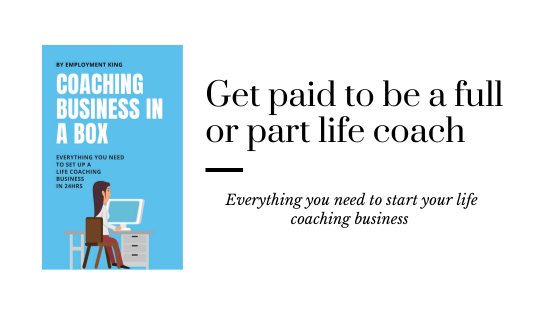The recruitment process is becoming really tricky, with a wide range of different types of job interviews that are delivered by individuals, panels of experts, external recruitment companies, and even AI bots. Interviews can be virtual, face-to-face, or even in the Metaverse. Is it me or is getting a job becoming even more complicated?
Here is a long list of the various types of job interviews that a job seeker will have to attend:
- Behavioural Interview
- Situational Interview
- Structured Interview
- Strength-based interview
- Screening Interview (by phone/webcam)
- Antonyms Video Interviewing – AI bot interviews
- Assessments Centres
- Working Interview
- Role Plays (conducted by trained actors)
- Values Interview
- Stress Interview
- Informal Interview
- Group Interview
- Interview Presentation
- Panel Interview
With such a long list of interview options, it’s hard for a job hunter to prepare, and therefore pass, a job interview.
To help career professionals understand a potential forthcoming recruitment process, it is important to look at the level of job role and the size of the organisation.
Why the job level affects the type of job interview you will attend
The level of job role, from low-to-high skilled positions, has a direct result on the number of job interview stages and type of job interview questions an employer will ask.
Low-skilled (sometimes referred to as un-skilled) job roles include:
- Waiter
- Janitor
- Transport driver
- Warehouse operative
- Care worker
- Food production worker
- Security guard
- Farm worker
Source Indeed
As low-skilled positions often require physical or repetitive tasks to be performed, rather than the use of knowledge, creative problem-solving, or project management, employers will ask simple questions often based on the skills required for the vacancy:
- Give me an example of working within a team?
- Do you have experience of working in a factory?
- How much time did you have off in your last role?
High-skilled roles require an employee that has had specialized training/higher education in order to operate, manage or participate in a project – this can be physical or mental.
Source: Investopedia
Larger salaries are normally associated with high-skilled positions, and therefore employers ask more specific and tricker questions to test the applicant’s ability to complete the day-to-day tasks related to the position being advertised. The interview questions can be based on actual duties or the required skills, IE, problem-solving.
- What would you do if (situation) happened?
- Give me an example of managing multiple projects with various deadlines. How do prioritise tasks, stay on budget, and collaborate with stakeholders?
- How would you work out how many drainage grids are in London?
Research shows how a structured job interview, the asking of the same questions to each interviewee, with answers being marked via a scoring system, is the best way to predict job performance.
High-skilled job roles often require a level of knowledge/experience which results in the majority of employers adopting the structured job interview when recruiting high-skilled employees.
Senior positions, which often require either a long duration in the industry and/or sector-related qualification above a degree level, result in many recruiters wanting additional proof of knowledge/skills/experiences.
Additional interviews are common for high-skilled roles to check suitability. As are other interview stages: AVI screening interview, assessments, role plays, and working interviews.
Low-skilled interviews are either formal (unstructured) or informal (structured). In the main, employers adopt the informal/formal job interview based on the size of the organisation.
For low-skilled positions, a one-off 1-2-1 job interview is enough for a hiring manager to make a hiring decision. Some sectors have an additional group exercise task to review teamwork and communication – the size of the company influences the number of interview stages a low-skilled applicant has to go through.
The size of the organisation
Employer size, and popularity, have a massive effect on the time spent on recruitment from an employer’s perspective. As an example a small family company looking to recruit an IT analyst will receive, let’s say, 20 applications. A large and well-known brand, such as Amazon, Google, Microsoft, can receive in excess of 20,000 applicants.
Source: PathMatch
Such a high number of applicants per vacancy has resulted in large employers adopting AI to support HR hiring decisions.
To screen such a vast number of potential employees, hiring managers will ask additional shifting questions on the application form (relating to essential criteria) and will use AVI – autonomous video interviewing. AVIs in short are artificial intelligence interviewers, that ask around 3 structured interview questions and are programmed to cross-reference an applicant’s interview answers against the job criteria.
AVIs are a quick and easy way for a large employer to reduce the number of candidates without human intervention. Many employers recruiting for low-skilled employees, such as fast food servers, have embedded AVIs into their recruitment process.
Most employers still require a face-to-face formal or informal interview following the AVI, but anyone unsuccessful following an AI bot video interview will need to reapply for any further positions.
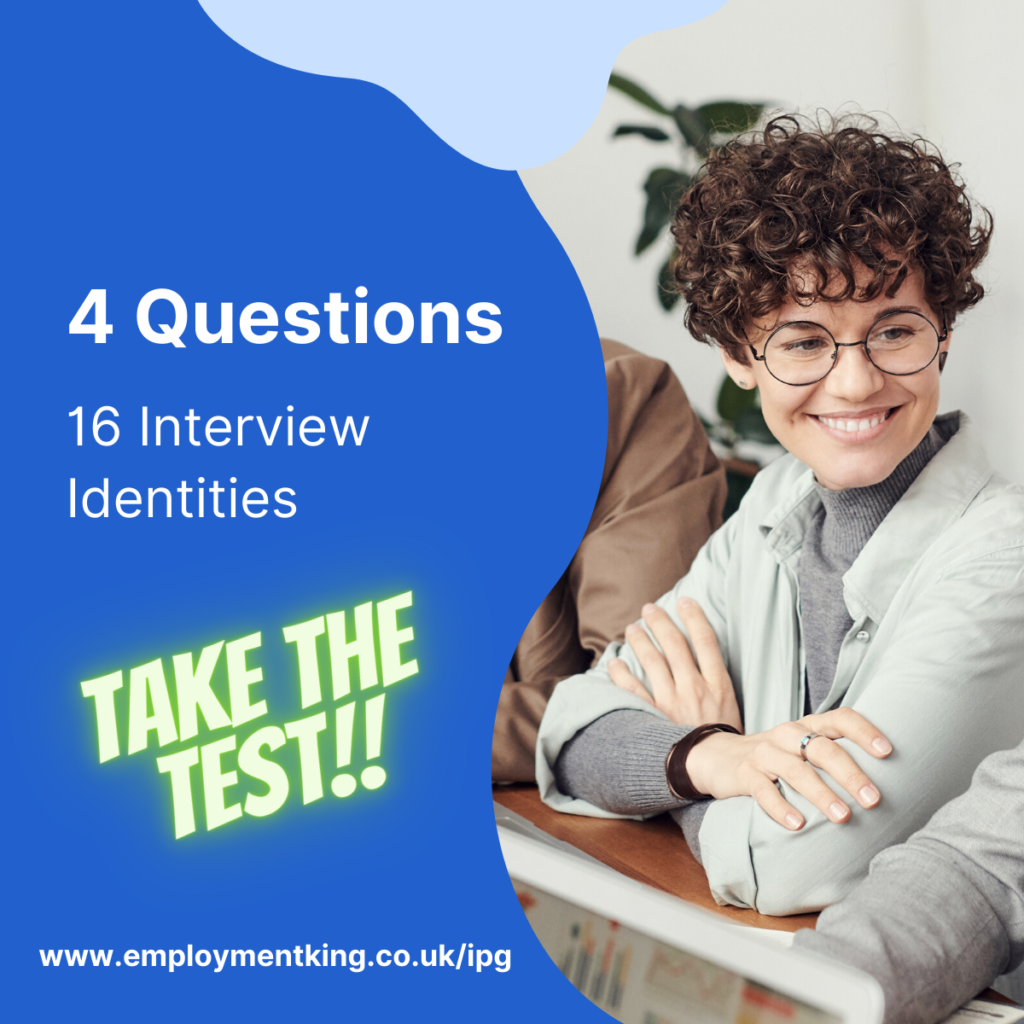
Larger employers, in the main, have well-embedded recruitment processes and procedures, which often include multiple interview stages for high-skilled roles, and less stages for low-skilled positions, with at least one interview stage being a structured job interview.
On the other hand, small companies have fewer interview stages even for senior roles, and, especially for a small family-run business, may adopt an informal interview. The informal interview is viewed as important for a small business as ‘fit’ is an important aspect of the hiring decision-making process. As is ‘loyalty’ – with loyalty meaning the duration an employee would stay with the small company.
Time and money influence the type of recruitment process a small or large company adopts. Smaller businesses, who recruit ad-hoc, are less likely to purchase an expensive AVI system, whereas the AVI is viewed as an investment and time-saving piece of tech for a large business.
The number of interview stages is also adjusted depending on the size of the company. Large brands will often have several rounds of interviews, especially for high-paying positions, to ensure they only recruit highly skilled and suitable professionals. Smaller companies are often satisfied with one interview stage for low-skilled roles and just two higher-skilled positions.

Can the job interview be predicted?
The three rules for passing a job interview are:
- Identify the job criteria – essentially predict the job interview questions
- Be a self-promoter – use various stories and examples that highlight the added value and the possession of the essential job criteria
- Communicate with confidence – which includes rapport building, easy to follow answer, persuasive language, and non-verbal communication
Knowing the job interview type, and therefore improving interview readiness, always helps to reduce job interview anxiety.
Even with an understanding of the common recruitment practices of large and small businesses and the level of job role, it is still hard to predict the interview stages for the job you are applying for. Or is it?
The goal of the recruitment process is to predict the job performance of the applicants. The barrier is that the anxiety created by the interview stages can create an environment where applicants don’t showcase their true self.
As mentioned previously, knowing the style of a job interview can reduce nervousness. With this in mind more and more employers are now stating the various stages of the interview and even explaining the type of interview questions, behaviour, or situational, that they will ask.
This openness from some employers hasn’t been rolled out to the masses. To date, many employers only state the interview duration. Also, there are no rules when it comes to job interviews, some employers will utilise one interviewer while another will use a panel of five. Interviews can last for 30 minutes or be a whole day assessment. Questions can be fixed or mixed, and some employers value skills or fit and vice versa.
The training an interviewer undergoes affects the interview environment, with many having no interview training at all. Some hiring managers will be nervous or confident, some will ask follow-up questions while others stick to the list of set questions, interviewers can be cold or warm, and some are experts in their industry. And, as discussed previously, interviews can be with humans, robots, and even some are now taking place in the metaverse.
Source: spotlight data
Based on the size of the company and the level of advertised position this interview grid can indicate the type of job interview a career professional will attend for various roles, helping job candidates prepare for a forthcoming interview.
